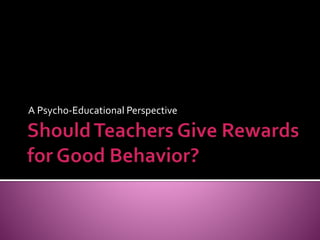1. Reward systems can be effective for managing disruptive student behavior in the short term by gaining compliance, but they do not address the underlying issues or teach self-management skills.
2. For rewards to be most effective, the student should be involved in selecting rewards and setting goals. The link between the rewarded behavior and rewards must be clear.
3. The goal of interventions for disruptive students should be to teach self-management of behavior and transition students from an externally supported system to internal motivation. Rewards are just one supportive tool in a comprehensive guidance program.













